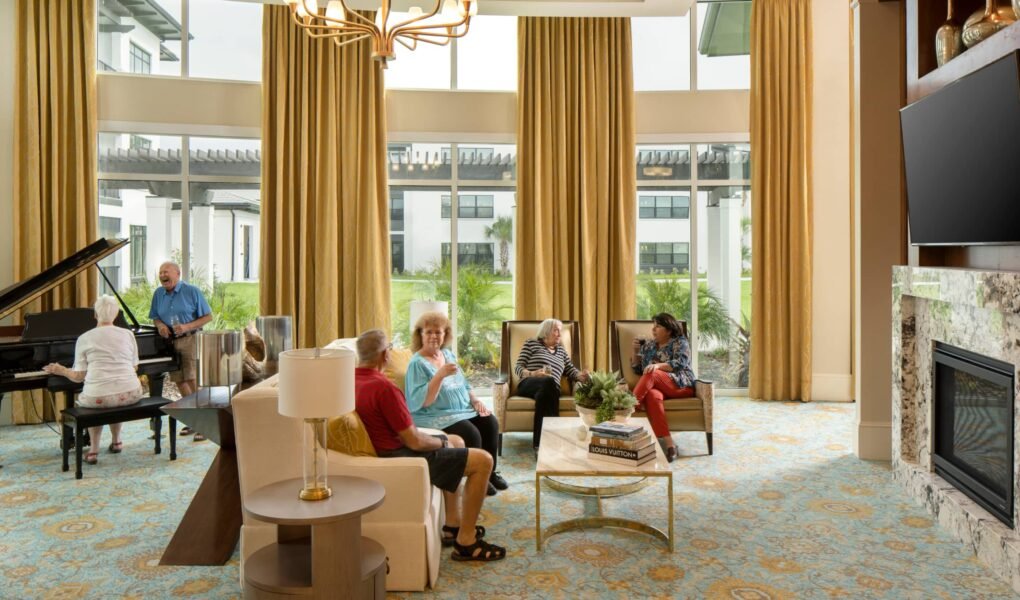Understanding Senior Living Communities
Over the years, the concept of senior living communities has transformed significantly. Far from the institutional settings of the past, today’s communities offer a spectrum of living arrangements designed to support the changing needs of seniors. These arrangements cater to residents who are entirely independent but desire the companionship and convenience of community life and those who need varying degrees of assistance with daily activities or specialized memory care. The essence of such spaces is to provide safety and healthcare and enrich seniors’ lives through many recreational, educational, and social options. These communities have evolved from mere housing facilities to vibrant environments where seniors can thrive.
Critical Benefits of Senior Living Communities
Living in a community designed with seniors in mind brings many advantages. On the healthcare front, residents often have access to medical professionals, support staff, and wellness programs that proactively manage and improve health outcomes. Socially, these communities mitigate the risk of isolation by organizing a wealth of engaging activities, clubs, and events. These not only provide entertainment but foster a sense of belonging among residents.
Another significant benefit is the convenience of a maintenance-free lifestyle. Seniors can relinquish the responsibilities of homeownership — yard work, repairs, and cleaning — to enjoy their time pursuing interests and hobbies. Enhanced security measures are often a core feature, offering seniors and their families peace of mind that they live in a safe and protected environment. To explore some concrete examples of how these benefits manifest in real-world settings, one can find additional insights here.
Choosing the Right Community
Selecting the perfect senior living community can be multifaceted, requiring introspection into one’s desires and needs and honest family discussions. Careful evaluation of health services, cost management, accessibility, and the cultural environment will steer families toward a community that aligns with personal values and lifestyle preferences. Financial planning goes hand in hand with this decision, ensuring that residents and their families can make the most of the community’s offerings without undue stress over expenses. Whether seeking a vibrant social life, tranquility, cultural enrichment, or comprehensive care, a senior living community is positioned to meet those expectations.
The Role of Community in Healthy Aging
The benefits of being socially active later in life cannot be overstated. Communities play a crucial part in facilitating ongoing social interactions, which have been shown to support mental health and enhance life satisfaction. Cognitive health, too, stands to gain from regular communal engagement, with studies indicating a link between social activity and mental acuity. Senior living communities can greatly encourage these kinds of interactions through their physical layout and the amenities they provide. To grasp the depth of this topic, one can refer to a study by the National Center for Biotechnology Information, which offers evidence of the critical importance of social engagement in healthy aging. Noteworthy are the instances where senior living communities have changed lives, illustrating how robust social networks help residents flourish.
Staying Active: Opportunities in Senior Communities
The maintenance and enhancement of older adults’s health, mobility, and independence depend heavily on physical activity. Community centers play a vital part in this by offering structured programs such as fitness classes, water aerobics, yoga, and walking clubs. These programs are tailored to meet the capabilities of senior residents, emphasizing safety, enjoyment, and the beneficial aspects of regular exercise. Many communities recognize the significance of such activities and have dedicated staff to guide and motivate residents. The outcome is a healthier, happier, and more engaged community of seniors.
Technology Integration in Modern Senior Living
Technology has become deeply interwoven into the fabric of senior living communities. Smart homes equipped with voice-activated assistance, automatic lighting, and advanced safety features empower residents with greater independence. Emerging health technologies, such as wearable fitness trackers and telehealth services, provide valuable data and connectivity to healthcare providers, allowing timely interventions and continued monitoring of vital health metrics. Technology is essential, too, in nurturing relationships. It helps bridge the gap that physical distance may create between families and their loved ones, enabling them to share moments, communicate regularly, and remain a central part of each other’s lives despite the distance.
Nutrition and Dining Experiences
Another facet that senior living communities can profoundly impact is their approach to nutrition and dining. With advanced age, dietary needs shift — necessitating a greater focus on nutrient-dense foods that cater to senior health. Communities attentively design varied, culturally appropriate menus tailored to dietary restrictions while creating an enjoyable dining atmosphere. This attention to the nutritional and social aspects makes meals pleasurable and encourages communal bonding over shared dining experiences. The care and thought that goes into these offerings showcase how food and nutrition are integral to the holistic care provided by senior living communities.
Transitioning to a Senior Living Community
Adapting to life in a senior living community marks a significant transition that encompasses both logistical and emotional dimensions. Selecting what to keep, donate, or discard can be challenging, but it can also rekindle memories and pave the way for creating new ones. Customizing a new living space with personal belongings and mementos can make a new apartment feel like home. Community staff play a pivotal role in easing the transition by providing support and assistance and fostering a welcoming atmosphere that helps new residents settle in and thrive.
Family Engagement and Communication
Senior living communities understand the importance of family engagement in their residents’ lives. They offer various communication tools and resources to ensure families are informed and involved. These may include newsletters, family portals, and organized events encouraging family participation in the community. Regular and transparent communication paves the way for intense relationships among staff, residents, and families, instilling a sense of trust and cohesion in the community fabric.
Looking Ahead: The Future of Senior Living
Anticipating the future of senior living involves recognizing ongoing trends and adapting services and amenities to meet the expectations of the next generation of residents. Innovations in care, environmental design, and wellness models stand at the forefront of these changes. The industry is also paying close attention to the inclinations of baby boomers looking towards retirement living with fresh preferences and priorities. These insights into the sector’s trajectory inform how senior living communities position themselves at the cutting edge of care, comfort, and life enrichment well into the future. Resources that assist in navigating the complex landscape of senior living options and give families a comprehensive understanding of the topic can provide much information and guidance on the subject.




